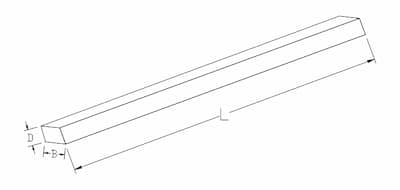
- long ()
- axis of the beam is straight
- constant cross-section throughout its length
Classified by supporting conditions
Section titled “Classified by supporting conditions”First 3 are the mandatory ones in s1.
u.d.l means uniformly distributed load.
| Type | Image | Notes |
|---|---|---|
| Simply supported beam | 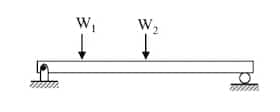 | At ends: Max SF and BM = 0 |
| Cantilevered beam | 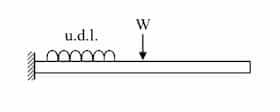 | At fixed end: Max SF and BM |
| Overhanging beam | 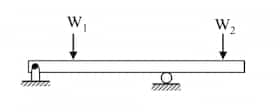 | |
| Propped cantilevered beam | 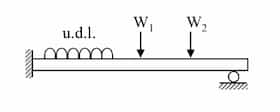 | |
| Continuous beam | 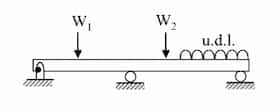 | |
| Fixed beam | 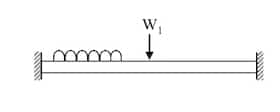 | At ends: Max SF and BM |
At a section
Section titled “At a section”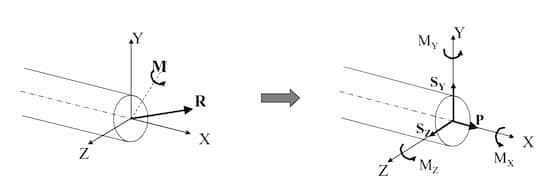
- - Normal force / Axial force
- - Shear forces along and axis
- - Twisting moment / Torque
- - Bending moments about and axis
Degress of freedom
Section titled “Degress of freedom”A plane member have 3 degrees of freedom. Any of the 3 can be restrained.
- Displacement in -direction
- Displacement in -direction
- Rotation about -direction
SFD & BMD
Section titled “SFD & BMD”Sign convention
Section titled “Sign convention”- Bending moment
- Hogging (curves upwards in the middle) is (+) ve
- Sagging (curves downwards in the middle) is (-) ve
- Shear force
- Clockwise shear is (+) ve.
- Counterclockwise shear is (-) ve.
Pure bending
Section titled “Pure bending”A member is in pure bending when shear force is and bending moment is a constant.
Point of Contraflexure
Section titled “Point of Contraflexure”The point about which bending moment is , and changes its sign through the point.
Distributed load
Section titled “Distributed load”Suppose a beam is under a distributed load of per unit length.
Deflection of a beam
Section titled “Deflection of a beam”Suppose a simply supported beam is applied a load of at mid-span.
Here:
- - Maximum stress
- - Deflection
- - Load
- - Span length
- - Young’s modulus
- - Second moment of cross-sectional area
Principle of Superposition
Section titled “Principle of Superposition”A beam with multiple loads can be split into multiple systems each with a single load. Reason for doing so is the ease of calculations.
Values will be the sum of each system’s corresponding value.